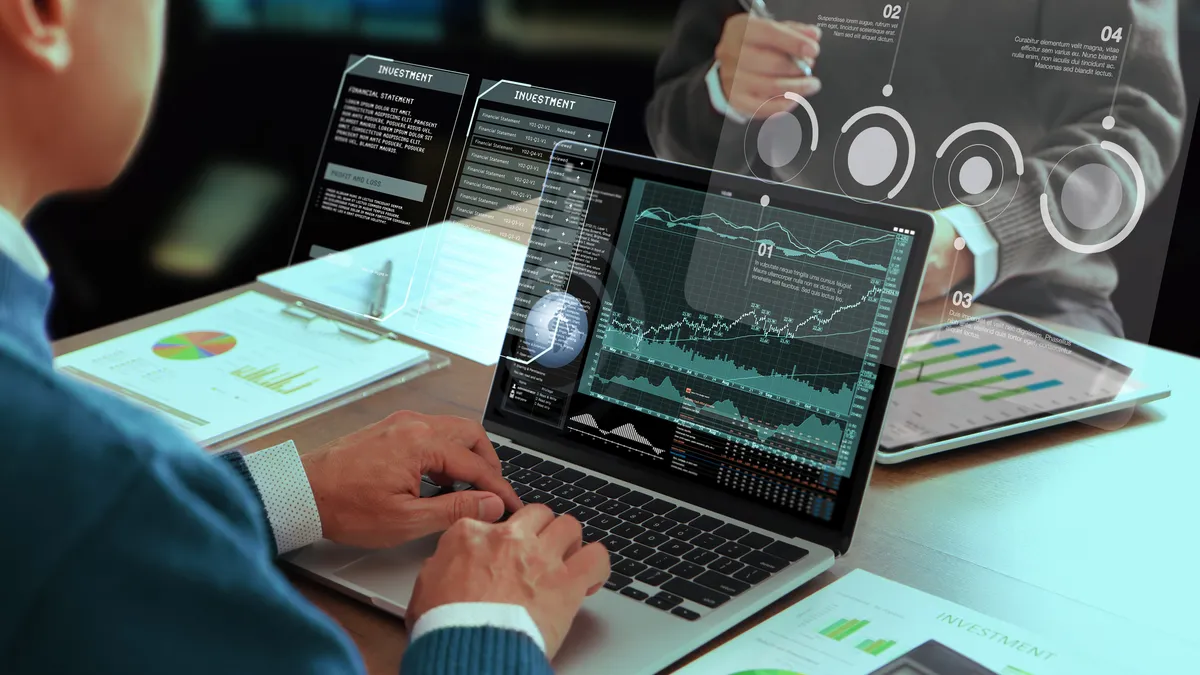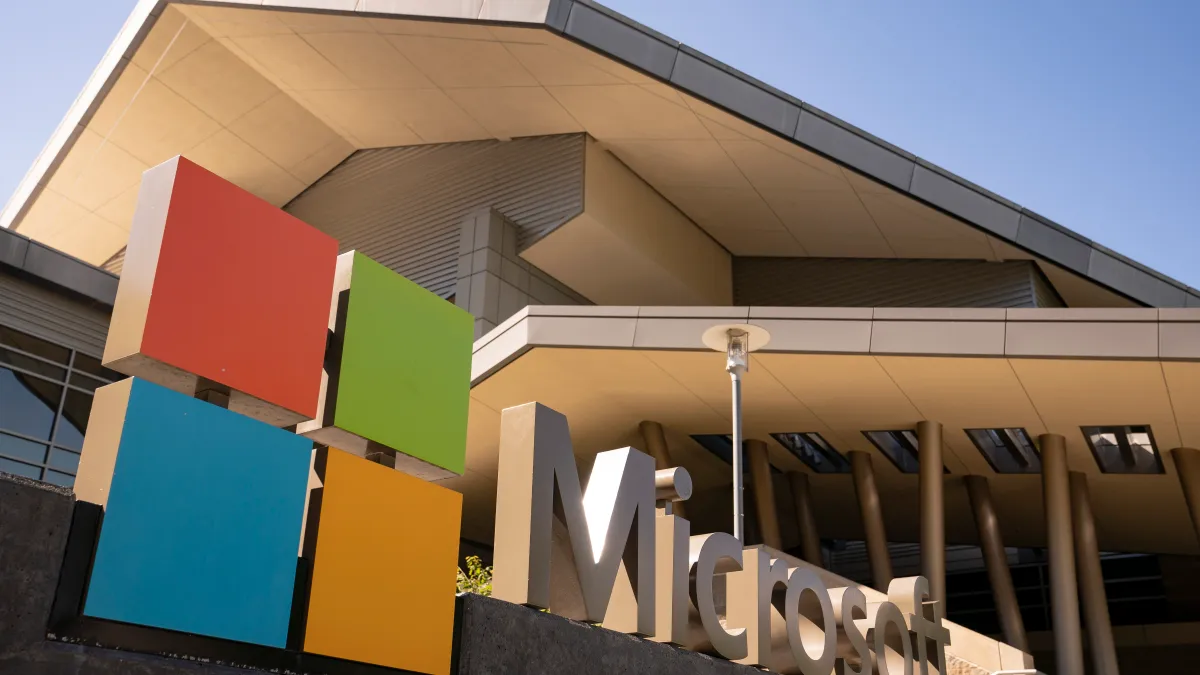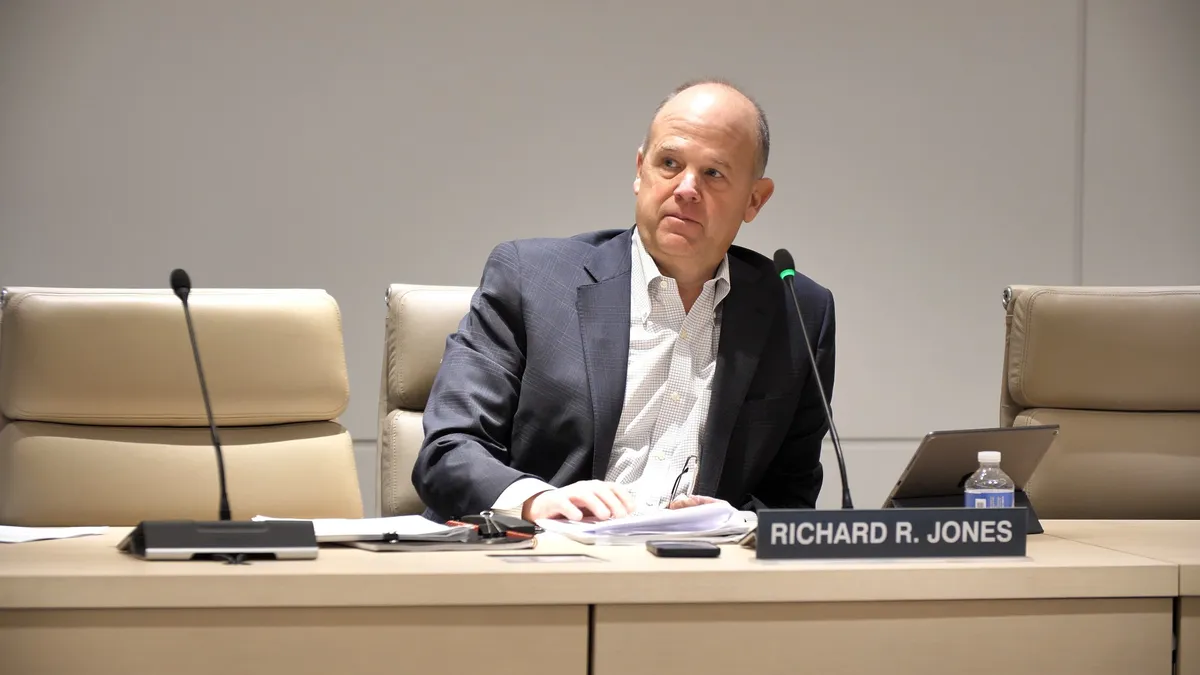Editor’s note: This is the second in a series of stories by CFO Dive that is examining how technology and fast-changing expectations are reshaping critical roles in the finance function. The first article on the modern finance teams CFOs are building looked at the evolving roles that controllers play.
In the face of new ways of working and technologies, finance professionals like the chief accounting officer are seeing their historic roles morph to fit the needs of a modern business. The CAO is one of the highest-ranked members of the finance team, often second only to the CFO.
Like the controller, the CAO acts as a trusted partner and advisor for the finance chief, but when it comes to differentiating between the CAO and the controller, “the aperture is just a little bit bigger, when I think about it at the CAO level,” said Lauren Hotz, CAO of software provider Intuit.
Widening the aperture
Hotz has logged a nearly two-decade career at the Mountain View, California-based technology provider, which offers products including QuickBooks, TurboTax and Mailchimp. She has held numerous roles throughout her time at the company, including as its VP of finance and corporate controller, and has served as its CAO since February 2022, according to her LinkedIn profile.
Processes such as the quarterly close or how accounting policies are implemented across an organization often fall into a controller’s purview, for example, while as a CAO, Hotz takes responsibility for “areas around financial systems and governance,” she said. Hotz spends much of her time focused on compliance, working closely with Intuit’s chief audit executive regarding compliance surrounding the Sarbanes-Oxley Act as well as overall governance, she said.
“I spend time in other types of compliance, looking at things that we produce externally, like scripts, press releases…ESG, all the new climate rules, cybersecurity,” Hotz said by way of example. “There's just a little bit of an open aperture when it comes to those functions, and that's really where I find myself and my peers in [the] industry tend to focus.”
That range of responsibilities means that the CAO has a critical role to play in the finance function, reflected in their compensation. On average, CAOs in the U.S. receive annual salaries of $238,200, according to data from Salary.com. Annual salaries can range between $238,200 to $334,100.
CAOs act as key partners for finance chiefs in a world where CFOs need to juggle a growing amount of information, quickly. Today, a CFO is expected “to become a data expert, and a process expert and a systems expert,” said Patrick Villanova, chief accounting officer of Los Angeles, California-based AP automation software provider Blackline.
That expectation is then filtered down to the rest of the finance function, with many of the responsibilities historically taken by the CFO now given over to the CAO — the two roles have a “symbiotic relationship,” Villanova said in an interview.
CAOs can step in on some of the processes overseen by controllers — such as account reconciliation — but they are also expected to support the CFO in strategic decisions. A close working relationship between the two is especially critical as finance chiefs need to juggle an ever-increasing volume of data to do their jobs, Villanova said.
“So what has happened is a proliferation of data, and every company is just generating tons and tons of data because we have the computing power to do it,” he said. “And the issue with it is deciphering that data, ingesting that data, and changing that data into information and insights. Therein lies the challenge that a lot of CFOs face.”
CAOs — who are already experts in processes — are taking on the burden of ensuring information is accurately relayed to the CFO.
The CAO also needs to work closely with their CFO to ensure the business’ finance and accounting functions are moving smoothly; for Hotz, the CFOs she has worked with as CAO at Intuit — there have been two since she took the seat — have been more FP&A focused than accounting-focused finance chiefs, and “because of that there always is much more of a focus on strategy and operations and the segment finance functions,” she said.
“I think key to the role between a CFO and a CAO is excellent communication, understanding what's important for them to know, and what's not important for them to know,” Hotz said. As a CAO, Hotz also has a fiduciary responsibility that goes beyond who she reports to and “discharging that effectively is part of what I hold myself accountable to,” she said.
“It's not always what people want to hear, but it's always in service to managing risk and governance, because each of us as officers and signers have a responsibility to the public and to the street,” Hotz said.
Making space for strategy
The CAO’s evolution is part of an ongoing, decade-long trend impacting the finance function. As CFOs step into a more strategic role, CAOs are beginning to take on more of the “tactical and operational tasks that CFOs once dominated,” according to Oracle.
Today’s CFOs are also less likely to engage with the day-to-day of accounting, tax or related topics, according to a 2022 report by executive search firm Spencer Stuart, with the CAO increasingly absorbing the responsibilities the CFO is leaving behind.
“We’re the SOX experts, we're the process experts, we generate the actual information, actual financial results,” Villanova said of the CAO’s responsibilities. “So it really starts with the head of accounting, to ensure that the systems and controls and automation is in place to get information into the hands of the CFO, as quickly and accurately as possible.”
The evolution of finance allows it to provide more help to the rest of the organization, but also has benefits on the part of finance itself, Hotz said.
Earlier in her career, “this idea of being an enterprise connector that goes across the organization was done in service to the fact that if we could connect the dots, help things move through…we could get early reads on some of those issues,” she said, pointing to events such as products and new market launches. “And then that would help us make sure that we would get the operations and the reporting and the accounting correct.”
Playing that role as a connector is only more critical for finance today, when accounting skills are the bare minimum asked from the financial function. Finance is steadily being tapped to influence company decisions as well as keep a focus on governance, Hotz said.
The shift means financial professionals now “get into a lot of things that require a deep business acumen, and things that will go beyond the domain of just being an accountant,” she said. “There’s a leadership and an influence that you have to have.”
AI and the future of finance
Emerging technologies have accelerated finance’s evolution, changing the way controllers, finance chiefs and other critical finance executives approach their work and day-to-day responsibilities, CFO Dive previously reported. The “new CAO” is going to be looked at as the person to straddle the divide between finance and data science, said Greg Selker, managing director for executive search firm Stanton Chase.
“The new definition of a CAO is that, this person must have the basic understanding of data science,” Selker said in an interview. “Not be a data scientist but be able to talk about the business processes — particularly from an analytical perspective — that AI could automate and then work with a team of data scientists to take those concepts and to integrate the data science.”
While incorporating emerging technologies is not new — Intuit, for example, has been utilizing robotic process automation and other forms AI for years at this point — generative AI represents a new phenomenon the company is keeping a close watch on, Hotz said.
“I would say that's probably the thing that's really shifting now is, how do we do it?” she said of GenAI. “How do we get some of that benefit faster, and at a higher velocity than then maybe we have in the past?”
The company is still in its early days of experimenting with GenAI, she said, and the technology has the potential to help automate some of the time-sucking, routine tasks that can take up accountants’ time. Bringing AI into the accounting function allows for things such as faster categorization of expenses or quicker account reconciliation, automating key processes such as procurement, accounts receivable and accounts payable — “all of the areas that would fall ultimately with the CAO and the controller,” Selker said.
“The bottom line is, what is the level of interaction? What is the level of influence?” Selker said. “And given that the CAO is responsible for all of the data, it makes sense that the CAO has something to say about what the data means.”
For CAOs themselves, automation frees them up to conduct the data analysis companies are increasingly asking of their finance departments, rather than spending time simply aggregating the information.
Hotz views the technology as “an aid to doing things faster, and better and potentially at a higher degree of scale,” she said — a tool that still requires control and judgment on the part of the accountants utilizing it.
“I can't say that AI itself is going to change sort of the scope of my role,” she said. “It just might change how I do certain things.”
The introduction of AI is not only affecting how the finance department does their work, but the skill sets and experiences of who is doing that work. For example, over 10% of Villanova’s team focuses purely on systems and automation, sitting in the accounting department, he said.
“The fact of the matter is, you're now looking at maybe up to one in five people in your accounting and finance department [who] aren't an accounting or finance expert,” Villanova said. “They know enough to comprehend it. But their core skill set is systems AI, automation, and data.”





















